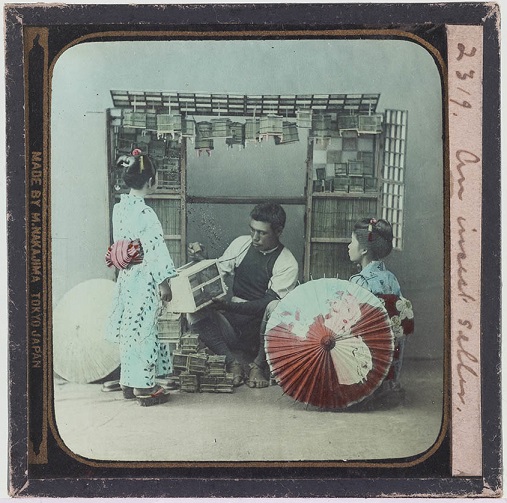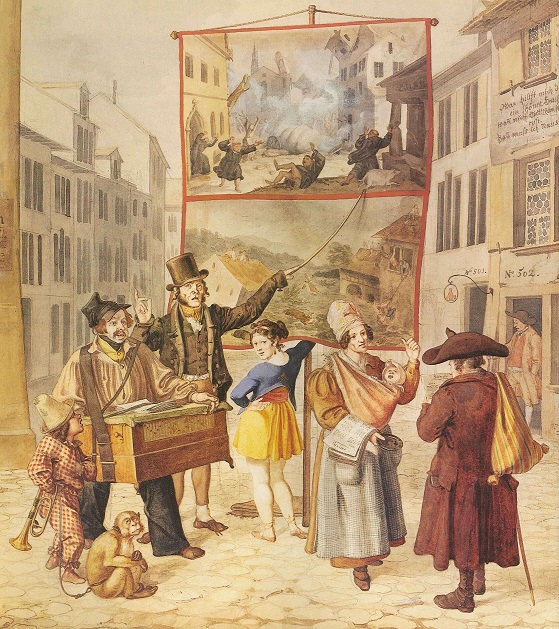Selected research 3: Towards an archeology of projection media-the arrangement and publication of “magic lantern” slides and the organization of exhibitions and art works based on digital data
-
Principal Researcher: Ryo Okubo (Project Research Associate, Public Collaboration Center, Tokyo University of the Arts)
Collaborative Researchers: Machiko Kusahara (Professor, Faculty of Letters, Arts, and Sciences, Waseda University), Eriko Kogo (Associate Professor, Meisei University School of Humanities), Manabu Ueda (Research fellow of Japan Society for the Promotion of Science), Miyuki Endo (Curator, Tokyo Metropolitan Museum of Photography)
【Research objective】
The Theatre Museum has many image-related cultural materials from the prehistory of cinema that are extremely precious, even when viewed from the perspective of global media history. This joint research project involves systematically arranging the Theatre Museum’s collection of slides on “magic lantern” and “Utsusie” (Japanese-style magic lanterns popular from the late Edo to the Meiji periods), and then specifying the age and themes of these slides, which have not been catalogued. This project further aims to share and present its findings to the public through an exhibition, a catalogue, and a database. In exploring the value of these slides, the research examines the option of using them as the basis for works of art and digital data.
【Summary of the research findings】
The exhibition “Magic Lantern Exhibition: The Archeology of Projection Media [gentō ten: purojekushon media no kōkogaku]” held from April to August 2015, and the publication of “The Natural History of Magic Lantern Slides: The Archeology of Projection Media [gentō suraido no hakubutsushi: purojekushon media no kōkogaku]” (Seikyusha, 2015) have highlighted two outstanding issues: (1) The necessity of collating slides with a magic lantern sales catalogue; and (2) elucidating the relationship between magic lanterns and other contemporaneous forms of visual culture.
With regard to (1), we have worked on digitizing the sales catalogue held by the Tsubouchi Memorial Theatre Museum and the sales catalogue held by Machiko Kusahara, which relates to the museum’s slides. The museum also holds foreign slides. We collated these slides with LUCERNA, a leading Magic Lantern web resource. The comparison revealed that the museum’s slides listed under categories such as “artists and musicians” and “photographers and children” were produced in 1905 by Theobald & Co. of Britain. We will continue to collate the materials with sales catalogues or databases, and we will add new findings from such comparisons to the Tsubouchi Memorial Theatre Museum database.
With regard to (2), in November 20, 2015, Miyuki Endo produced the report “Matsuchi Nakajima’s Magic Lantern Production [nakajima matsuchi no gentō seisaku].” Endo shed light on magic lantern production by Matsuchi, who was also a photographer, and revealed that artist Sono Akio drew the rough sketches of the slides. Endo also discussed the relationship between magic lanterns and other forms of visual culture, including photography, lithography, and oil painting. On January 12, Erkki Huhtamo produced the report “Screen Practice - Media Archaeological Perspectives.” According to Huhtamo, magic lanterns involved not only visual imagery but also music and performance. Based on this perspective, Huhtamo argued that the magic lantern was related to forms of mass culture, including illustrated narrations to moving panoramas and illustrated presentations of broadside ballads or bänkelsang.


